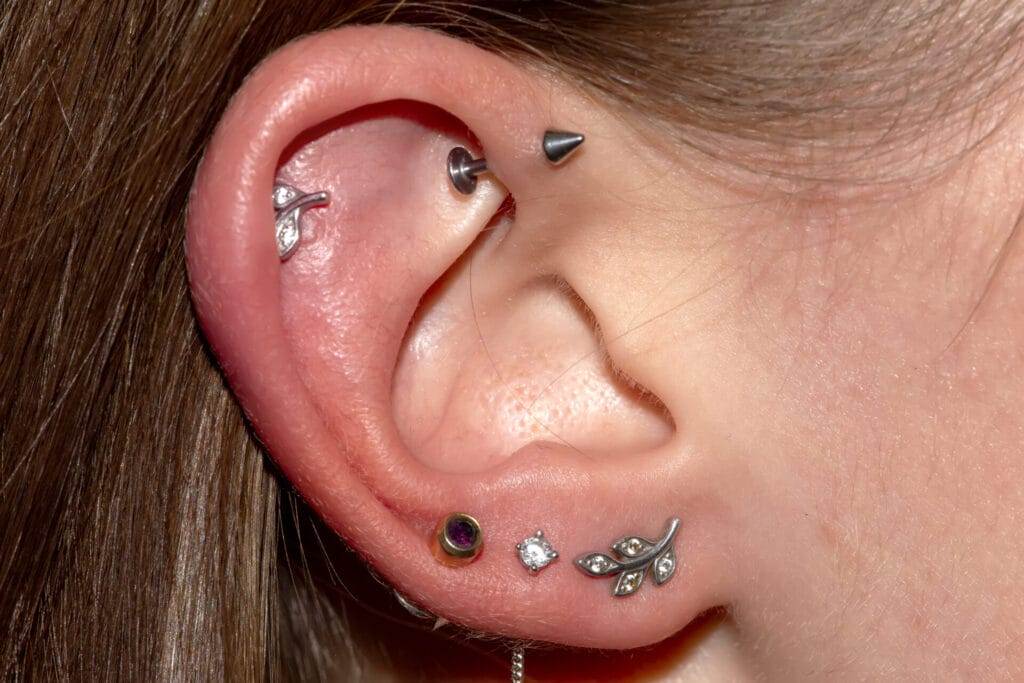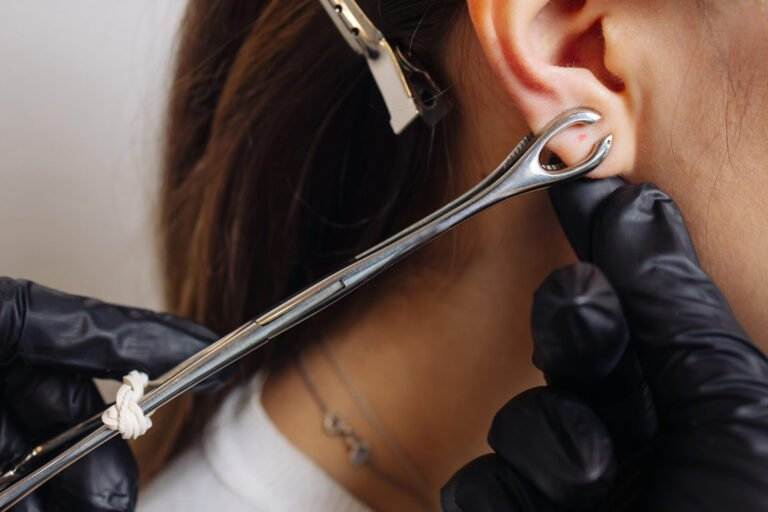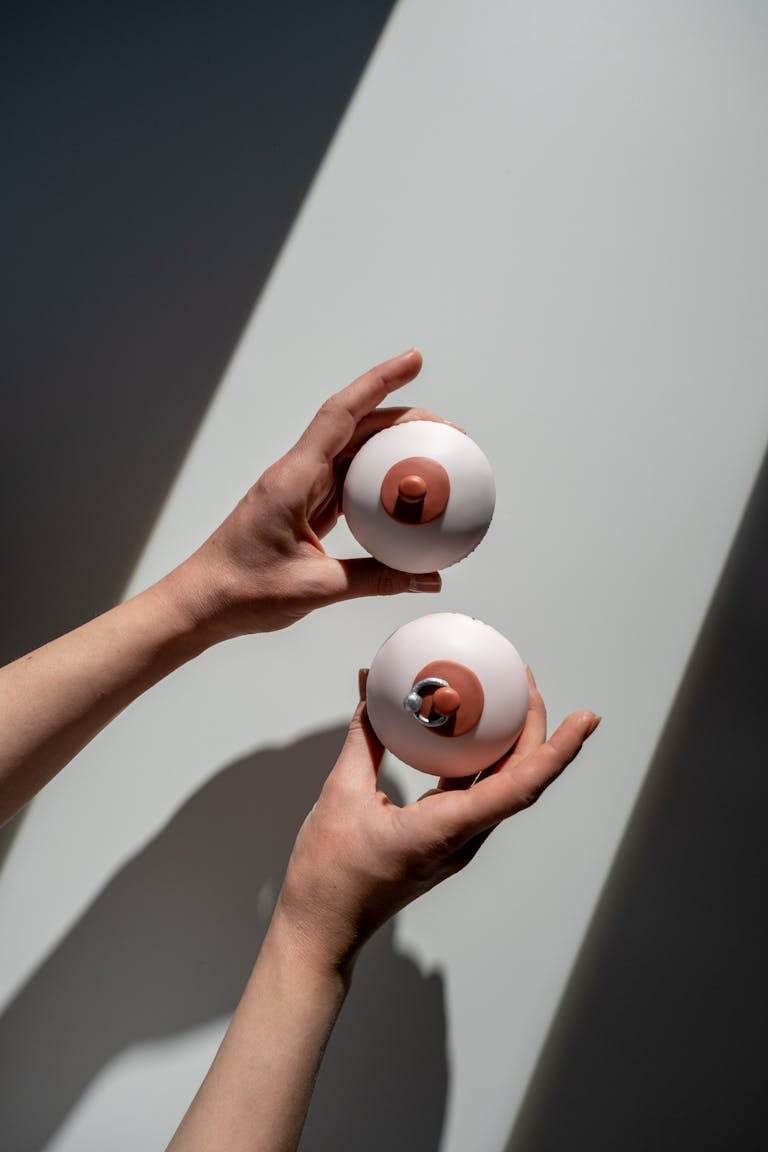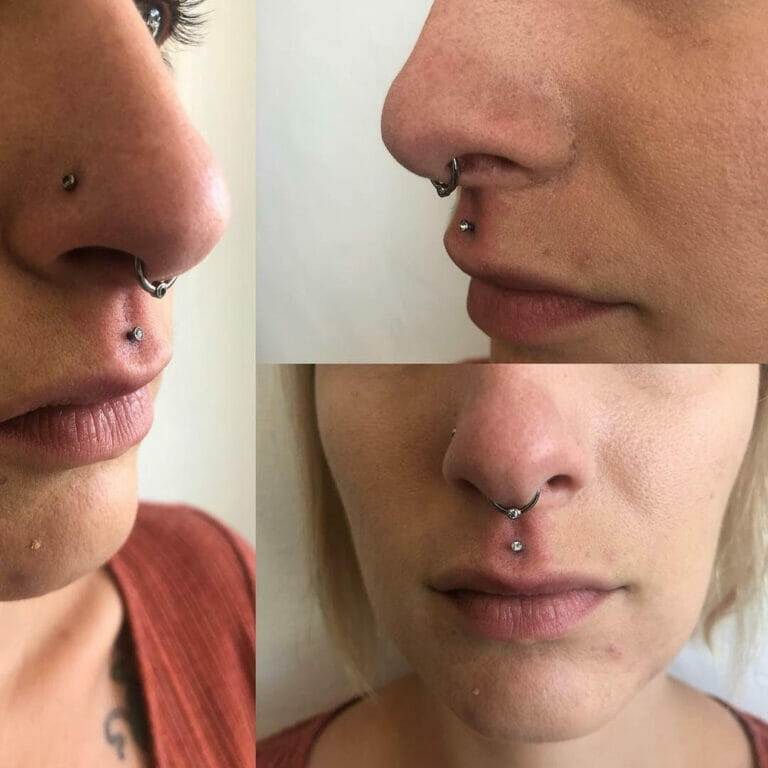Body piercings have a long and rich history that spans across cultures and time periods. From ancient tribal practices to modern-day fashion statements, body piercings have played a significant role in human expression and identity. Exploring the origins, symbolism, and cultural significance of body piercings allows us to gain a deeper understanding of this timeless tradition. In this article, we will delve into the ancient origins of body piercings, the role they play in tribal cultures, their evolution in Western society, their intersection with art and self-expression, the medical and psychological implications, their popularity in contemporary youth culture, their influence in popular media, their connection to alternative lifestyles, their global reach, and the future trends and innovations in piercing.
Key Takeaways
- Body piercings have ancient origins and can be traced back to various cultures around the world.
- In tribal cultures, body piercings often hold symbolic and social significance, representing status, identity, and spirituality.
- Body piercings have evolved in Western society from a fashion statement to a form of rebellion and self-expression.
- Piercing can be seen as an intersection of art and identity, allowing individuals to express themselves creatively through their bodies.
- While body piercings can have medical and psychological benefits, there are also risks and controversies surrounding the practice.
The Ancient Origins of Body Piercings: Tracing the Roots of a Global Tradition
Body piercings have been practiced for thousands of years and can be traced back to ancient civilizations such as Egypt, Rome, and India. In ancient Egypt, body piercings were seen as a symbol of wealth and status. Pharaohs and members of the royal family would adorn themselves with intricate gold earrings and nose rings. In ancient Rome, body piercings were used to signify membership in certain social classes or military ranks. Soldiers would wear nipple rings as a sign of bravery and dedication to the empire. In India, nose piercings were (and still are) considered an important part of a woman’s beauty and cultural identity.
The practice of body piercing is not limited to these ancient civilizations alone. It can be found in various cultures and regions around the world. For example, in African tribes such as the Maasai people of Kenya and Tanzania, ear stretching is a common practice that signifies beauty and cultural identity. In South America, indigenous tribes like the Kayapo people of Brazil use lip plates as a form of adornment and cultural expression. These examples highlight the diverse and widespread nature of body piercings throughout history.
The Role of Body Piercings in Tribal Cultures: Symbolism and Social Significance

In tribal cultures, body piercings hold deep symbolism and social significance. They are often used to signify status, identity, and cultural values. For example, in the Maasai tribe of Kenya and Tanzania, ear stretching is a rite of passage for young boys. The size of their stretched earlobes indicates their age and maturity within the community. In some tribes, body piercings are also used as a form of protection or spiritual connection. For instance, the Kayapo people of Brazil believe that lip plates protect them from evil spirits and bring them closer to their ancestors.
Body piercings in tribal cultures are not just about personal adornment; they are deeply rooted in tradition and community. They serve as a way to connect with one’s ancestors, express cultural identity, and maintain social cohesion within the tribe. The significance of these piercings goes beyond aesthetics; they are a reflection of one’s place in society and a way to honor one’s heritage.
From Fashion to Rebellion: The Evolution of Body Piercings in Western Society
| Year | Event | Significance |
|---|---|---|
| 5000 BCE | Ear Piercing | Symbol of wealth and status in ancient cultures |
| 1970s | Punk Movement | Body piercings became a form of rebellion and self-expression |
| 1990s | Mainstream Popularity | Body piercings became more accepted and popular in Western society |
| 2000s | Health Concerns | Increased awareness of health risks associated with body piercings |
| 2020 | Continued Trend | Body piercings remain a popular form of self-expression and fashion statement |
In Western society, body piercings have gone through various stages of evolution. In ancient Greece and Rome, body piercings were seen as a sign of wealth and status. However, with the rise of Christianity in Europe, body piercings became associated with paganism and were largely frowned upon.
It wasn’t until the 20th century that body piercings began to regain popularity in Western society. In the 1970s and 1980s, the punk movement embraced body piercings as a form of rebellion against mainstream culture. Punk icons like Sid Vicious and Joan Jett adorned themselves with multiple piercings as a way to challenge societal norms and express their individuality.
Since then, body piercings have become more mainstream and are now seen as a form of fashion and self-expression. From belly button piercings to nose rings, people of all ages and backgrounds are embracing body piercings as a way to enhance their personal style and make a statement about who they are.
Piercing as a Form of Self-Expression: The Intersection of Art and Identity
Body piercings can be seen as a form of art and self-expression. Just like tattoos or hairstyles, piercings allow individuals to customize their bodies and create a unique aesthetic. From simple studs to elaborate ear cuffs, there are endless possibilities for creative and innovative piercing styles.
Piercings can also be used to express identity and individuality. For example, someone with multiple ear piercings may be signaling their love for alternative music or their affiliation with a particular subculture. A person with a septum piercing may be expressing their connection to spirituality or their desire to challenge societal beauty standards.
The act of getting pierced itself can also be a transformative experience. It requires trust in the piercer, a willingness to endure pain, and a commitment to caring for the piercing during the healing process. This process can be empowering and can help individuals feel more in control of their bodies and their lives.
The Medical and Psychological Implications of Body Piercings: Risks, Benefits, and Controversies
While body piercings can be a form of self-expression and personal empowerment, they also come with certain risks and considerations. From a medical standpoint, there is always the risk of infection, allergic reactions, scarring, and other complications. It is important to choose a reputable piercer who follows proper sterilization procedures and provides aftercare instructions.
There are also psychological implications associated with body piercings. Some people may experience increased self-confidence and a sense of identity when they get pierced. However, others may face judgment or discrimination from others who do not understand or accept their choice to modify their bodies. It is important to be aware of these potential psychological impacts and to surround oneself with a supportive community.
Controversies surrounding body piercings also exist, particularly when it comes to issues of consent and cultural appropriation. It is essential to respect the cultural significance of certain piercings and to understand the history and context behind them. Appropriating cultural symbols without understanding their meaning can be disrespectful and offensive.
The Popularity of Body Piercings in Contemporary Youth Culture: A Generational Phenomenon
Body piercings have become increasingly popular among contemporary youth culture. From celebrities like Rihanna and Lenny Kravitz to social media influencers, piercings have become a trend embraced by many young people.
There are several reasons for this trend. Firstly, social media has played a significant role in popularizing body piercings. Platforms like Instagram and TikTok allow individuals to showcase their piercings and inspire others to get pierced as well. The ability to share photos and videos of one’s piercings has created a sense of community and has made piercing more accessible and mainstream.

Secondly, celebrity culture has also influenced the popularity of body piercings. When a popular celebrity gets a new piercing, it often sparks a trend among their fans. Celebrities are seen as trendsetters, and their choices can have a significant impact on popular culture.
Lastly, body piercings have become a generational phenomenon because they allow young people to express their individuality and rebel against societal norms. In a world that often tries to dictate how we should look and behave, body piercings provide an opportunity for young people to assert their independence and create their own unique style.
The Influence of Body Piercings in Popular Media: Celebrity Trends and Fashion Statements
Body piercings have become a prominent feature in popular media, influencing fashion and beauty trends. Celebrities like Beyoncé, Scarlett Johansson, and Harry Styles have all been seen sporting various piercings, which has helped to normalize and popularize the practice.
In addition to celebrities, body piercings have also made their way onto fashion runways and magazine covers. Designers like Alexander McQueen and Givenchy have incorporated body jewelry into their collections, blurring the lines between fashion and body modification. This integration of body piercings into high fashion has helped to elevate their status and make them more socially acceptable.
Body piercings have also become a form of self-expression in the music industry. Musicians like Travis Barker and Dave Navarro are known for their extensive body piercings, which have become part of their signature style. These musicians use their piercings as a way to express their creativity and individuality, both on and off the stage.
The Role of Body Piercings in Alternative Lifestyles: Punk, Goth, and Beyond
Body piercings have long been associated with alternative lifestyles and subcultures. In the punk movement of the 1970s and 1980s, body piercings were used as a form of rebellion against mainstream culture. Punk icons like Sid Vicious and Joan Jett embraced multiple piercings as a way to challenge societal norms and express their individuality.
In the goth subculture, body piercings are often seen as a way to enhance one’s dark aesthetic. Goths may choose to get pierced with black or silver jewelry to match their clothing and makeup. Piercings can also be used to create a sense of mystery or to evoke a certain mood or emotion.
Beyond punk and goth, body piercings have been embraced by various other alternative lifestyles and subcultures. From the BDSM community to the queer community, piercings are used to express identity, sexuality, and personal values. They can be a way to connect with like-minded individuals and create a sense of belonging within a particular community.
The Global Reach of Body Piercing: A Cross-Cultural Exploration of a Universal Practice
Body piercings have become a global phenomenon, transcending cultural boundaries and uniting people from different parts of the world. While the specific practices and meanings behind piercings may vary across cultures, the act of piercing oneself is a universal practice.
In some cultures, body piercings are seen as a form of protection or spiritual connection. In others, they are used to signify beauty, status, or cultural identity. Regardless of the specific reasons for piercing, the act itself is a way for individuals to modify their bodies and express themselves.
The global reach of body piercing can be seen in the increasing number of piercing studios and jewelry brands that cater to a diverse range of customers. From traditional tribal piercings to modern-day fashion trends, there is something for everyone when it comes to body piercings.
The Future of Body Piercings: Trends, Innovations, and the Evolution of a Timeless Tradition
The future of body piercings is filled with exciting trends and innovations. As technology advances, new materials and techniques are being developed to enhance the piercing experience. For example, biocompatible materials like titanium and niobium are becoming more popular due to their hypoallergenic properties.
In terms of trends, there is a growing interest in unique and unconventional piercing placements. People are experimenting with piercings in unexpected areas such as the fingertips, collarbones, and even inside the mouth. These unconventional placements allow individuals to push the boundaries of traditional piercing aesthetics and create their own unique style.
Another trend that is gaining popularity is the concept of curated ear piercings. Instead of getting a single piercing, people are opting for multiple piercings in the ear to create a cohesive and visually appealing look. This trend has led to an increase in demand for delicate and dainty jewelry that can be layered and mixed and matched.
The future of body piercings is also likely to be influenced by changing societal attitudes towards body modification. As body positivity and self-acceptance movements gain momentum, more people are embracing their bodies and choosing to modify them in ways that make them feel confident and empowered.
Body piercings have a rich history and cultural significance that spans across time and continents. From ancient tribal practices to modern-day fashion trends, body piercings have played a significant role in human expression and identity. They have been used to signify status, cultural identity, rebellion, and self-expression.
As body piercings continue to evolve, they will undoubtedly continue to be a timeless tradition that allows individuals to express themselves and create their own unique style. Whether it’s through the choice of jewelry, the placement of the piercing, or the act of getting pierced itself, body piercings will always be a powerful form of self-expression and personal empowerment.
If you’re interested in exploring other forms of body modification, you might want to check out the article “From Sparse to Spectacular: How Microblading at Embellish PB Can Transform Your Eyebrows.” This fascinating piece delves into the art of microblading and how it can enhance your natural beauty by creating fuller, more defined eyebrows. Discover the secrets behind this popular cosmetic tattooing technique at Embellish PB.
FAQs
What is the history of body piercings?
Body piercings have been a part of human culture for thousands of years, with evidence of piercings dating back to ancient civilizations such as the Egyptians, Greeks, and Romans.
What is the cultural significance of body piercings?
Body piercings have been used for a variety of cultural and religious purposes throughout history, including as a symbol of status, wealth, and power, as well as for spiritual and ritualistic reasons.
What are some common types of body piercings?
Some common types of body piercings include ear piercings, nose piercings, lip piercings, tongue piercings, eyebrow piercings, and nipple piercings.
What are some risks associated with body piercings?
Some risks associated with body piercings include infection, allergic reactions, scarring, and nerve damage. It is important to choose a reputable piercer and follow proper aftercare instructions to minimize these risks.
What are some modern trends in body piercings?
Some modern trends in body piercings include multiple piercings in one area, such as earlobe stacking and constellation piercings, as well as more unconventional piercings such as dermal piercings and genital piercings.





